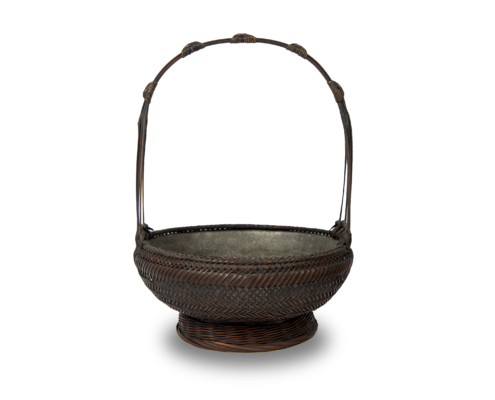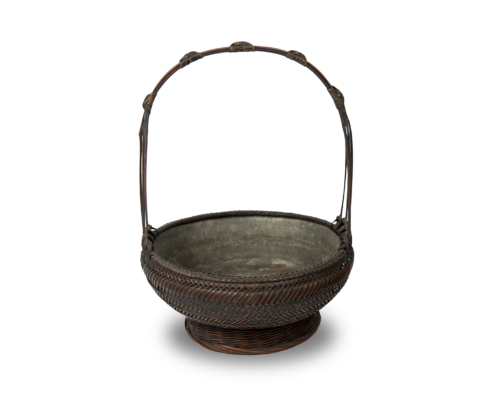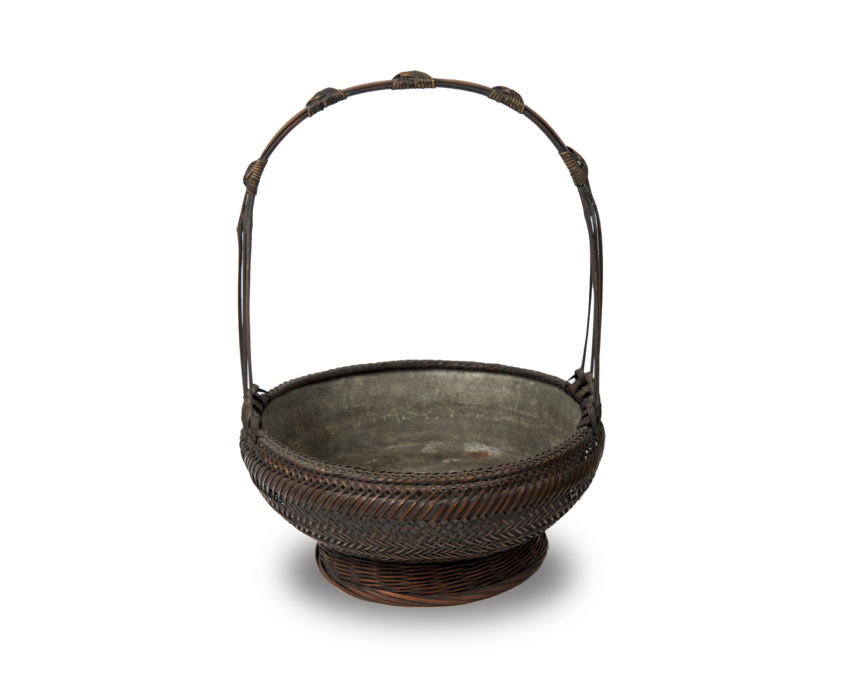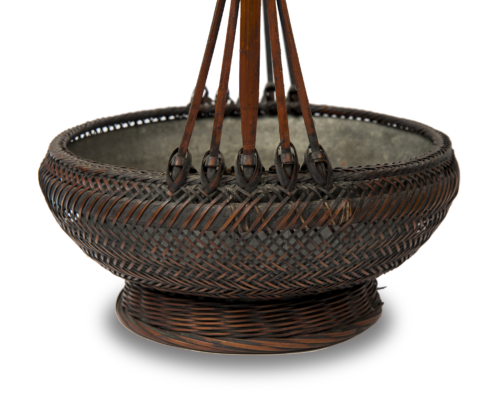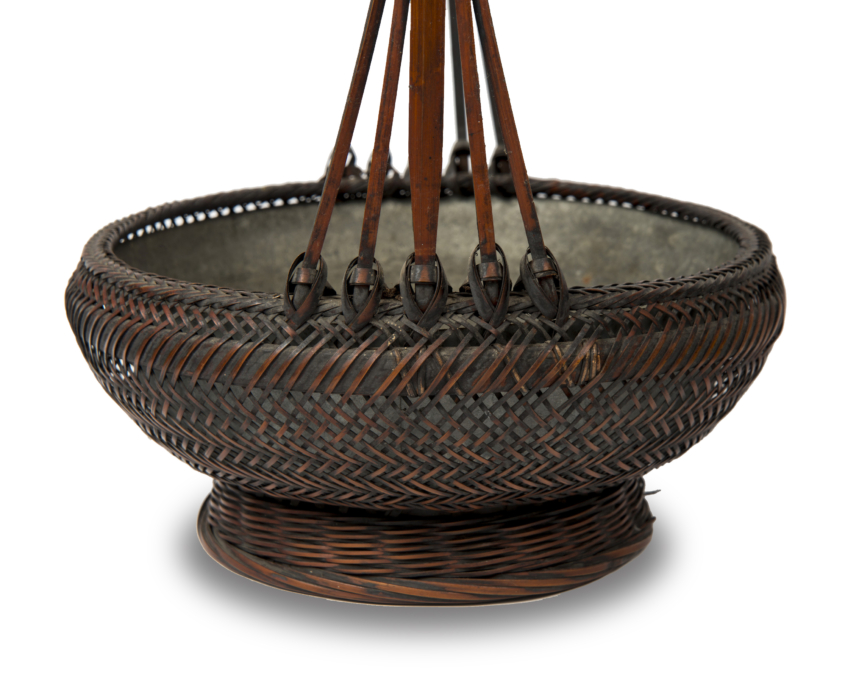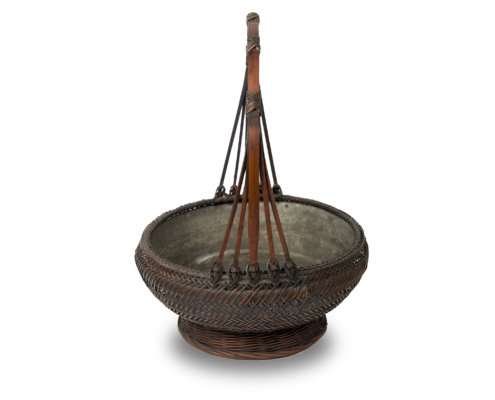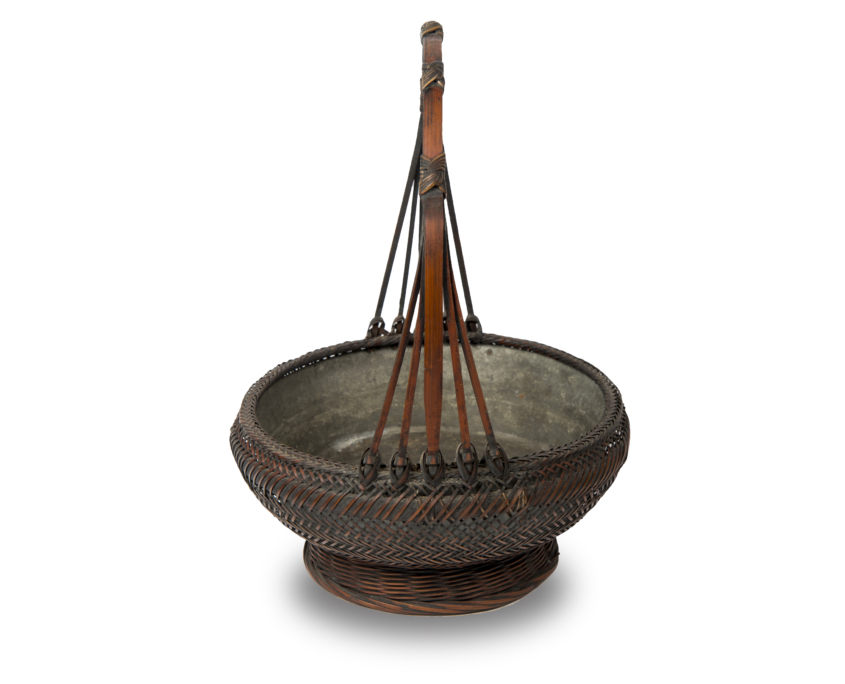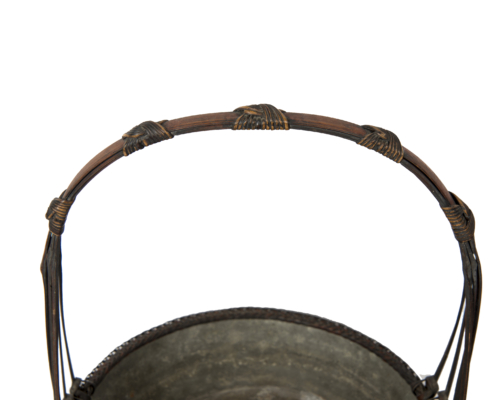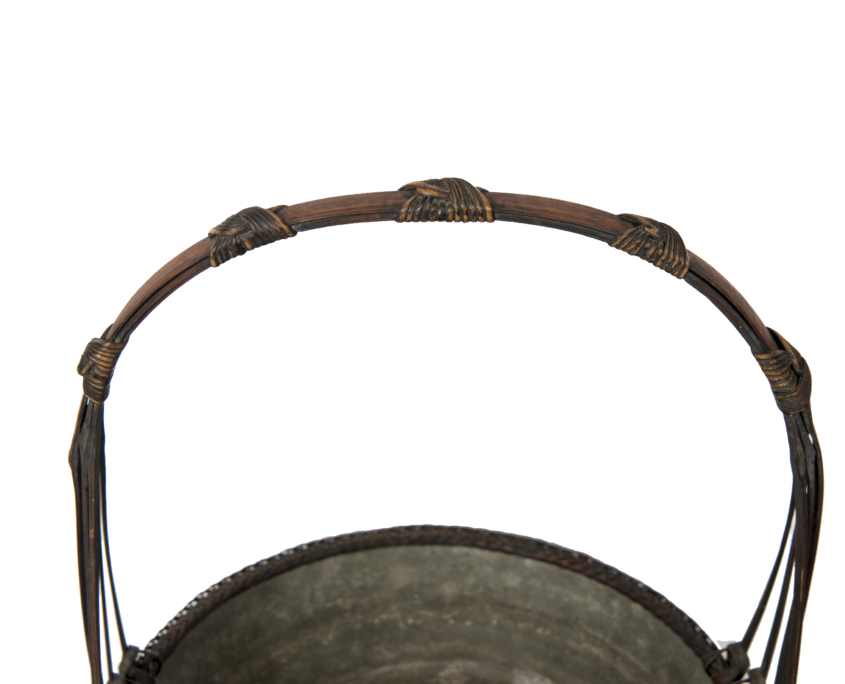BAMBOO IKEBANA WITH COPPER INTERIOR – MEIJI
Reference: 2017-428
Handled circular ikebana basket (hanakago) in Chinese style, in vanished bamboo and rattan. Inside in copper alloy.
Ikebana or Ka-do (the way of flowers) is a traditional Japanese art of flower arrangement. Unlike Western floral art, ikebana does not aim to emphasize only the beauty of the flowers and the harmony of colours. This art wants to enhance the vase, the stems, the leaves, the branches as much as the flower itself.
The structure of the floral arrangement is based on three symbols: the sky, the earth and humanity.
Ikebana is a tradition of floral art that dates back over thirteen centuries. Japan was inspired by the floral art of China at the beginning of the 7th century. The Tang dynasty then radiated throughout the Eastern world and the Japanese ambassadors brought back with Buddhism the custom of floral offerings – kuge – to Buddhist altars and stupas.
The ambassador Ono no Imoko became the priest Senmu, and was the first in Japan to codify floral art. He preferred to the Confucian exuberance the Buddhist sobriety and the Trinitarian principle’s classic rigor than we still find today in many Japanese bouquets.
Japan, Meiji Period (1868-1912)
Height: 4.9 in. (14 in. with handle – 12.5 cm ; 36 cm) – Diameter: 10.4 in. (26.5 cm)





